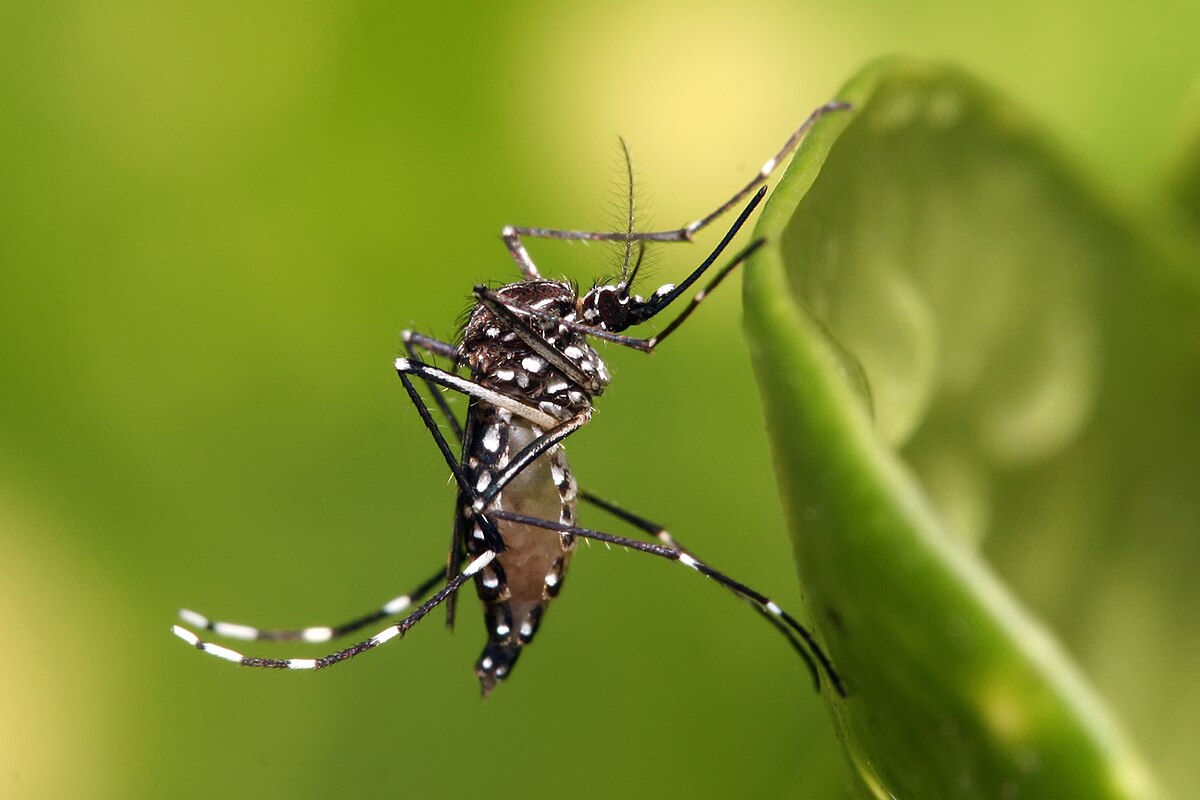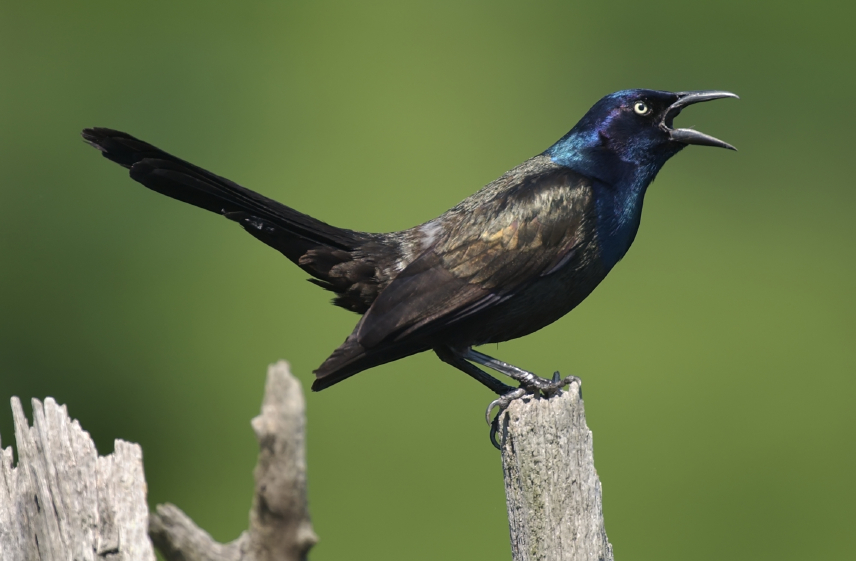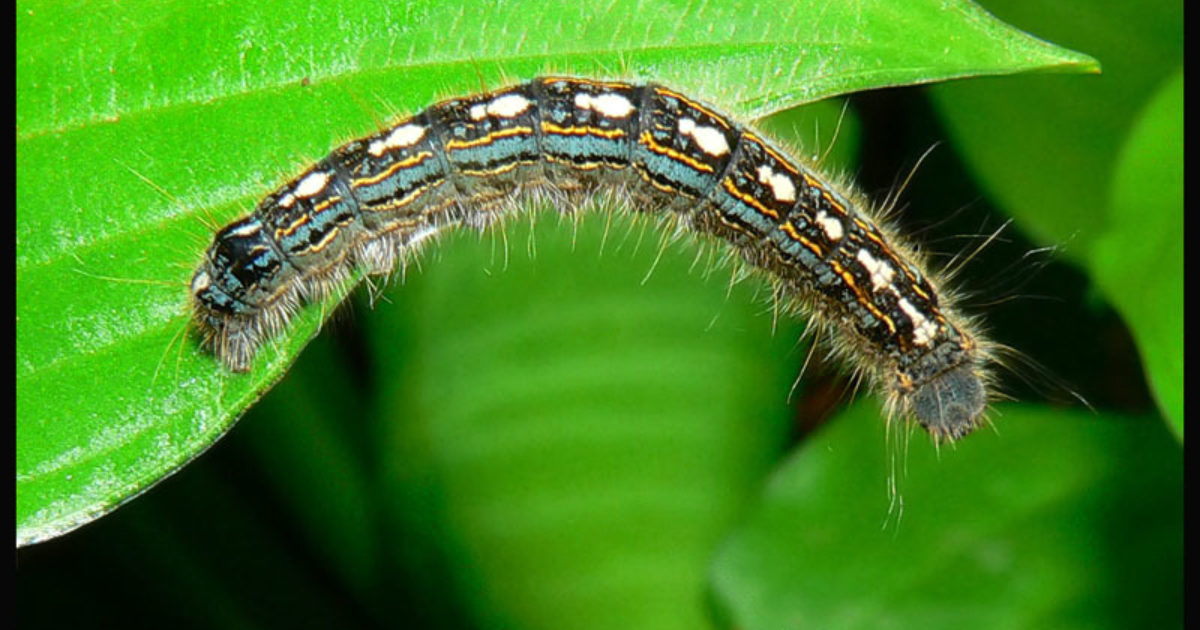
Tree worms are a common pest with the City of Yorkton. There are two distinct species of tree worms that are common in the city:
- Forest Tent Caterpillar and;
- Cankerworm.
Both species cause similar unsightly and unhealthy effects on trees and can be controlled in the same manner.
Forest Tent Caterpillar adults are tan colored moths, with two thin dark, parallel oblique lines of one single, broad, dark band crossing the middle of the front wings. The mature larvae are 45 to 55 mm long and are bluish to brownish in colour with diamond-shaped white spots on the middle of the back of each segment. It has two thin prominent broken yellow lines that extend along each side of its hairy body.
Both spring and fall cankerworms are about 2.5 cm long when fully grown. They range in colour from light green to brownish green with a dark stripe down the back.
Symptoms and Characteristics
Forest tent caterpillar larvae feed initially on the opening buds, later consuming parts of or whole leaves of broad-leaved deciduous trees and shrubs. During high population, forest tent caterpillars can completely strip trees and will then feed on the shrubs and other vegetation.
Cankerworms leave small holes in the new leaves. As the cankerworm larvae eats, the hole become larger until only the leaf veins remain. During high populations, canker worms can also completely strip trees of their leaves.
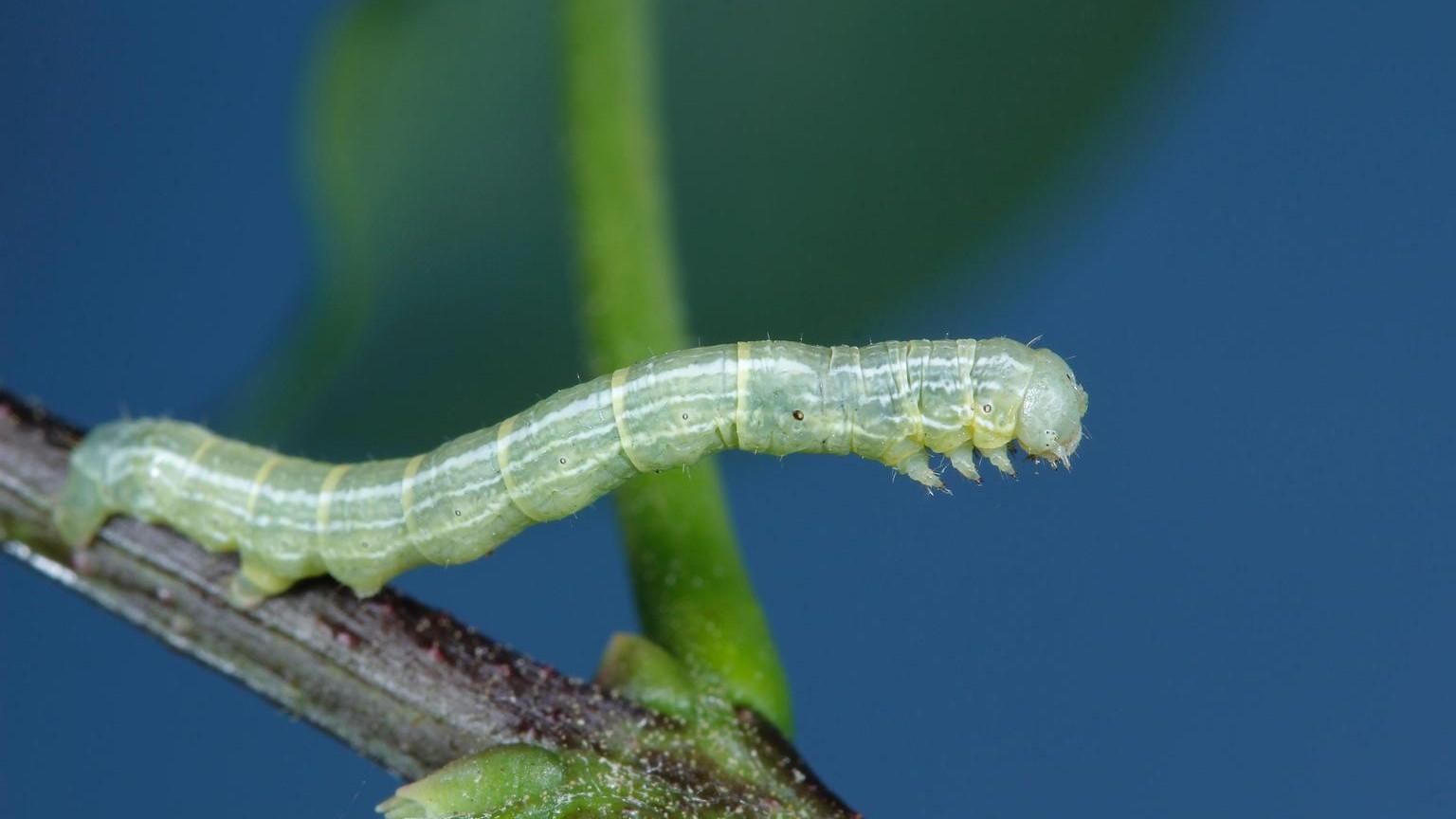
Will the Tree be Damaged?
Healthy trees should grow back their leaves two to three weeks after being stripped or by early July depending on the year. However, their growth is slower and they are less able to fight potential new diseases and other insect attacks.
Control and Preventions
On smaller trees and shrubs, an effective means of controlling the forest tent caterpillar is pruning or breaking off the egg masses on the twigs and disposing of them in the garbage. This is best done in fall or in early spring when there are no leaves on the trees and the egg masses are most visible. After hatching, young colonies of larvae can be pruned off or squashed while they are resting in clusters on the main stem, especially in the evenings or on cool nights.
The best way you can control adult cankerworms is to band your trees. Banding your trees with a product, such as Tanglefoot, is an environmentally acceptable way to keep adult cankerworms from climbing the tree to lay eggs. You should band your trees by mid-March to control the spring cankerworms and by mid-September (or before the first hard frost) to control the fall cankerworm. Encourage your neighbours to also band their trees because cankerworms can travel on their silken threads as larvae. Remember to remove the band by the end of June to prevent rotting bark.
When trees are too large or there are numerous larvae of either worm species, a non-chemical insecticide that contains Bacillus thuringiensis var, kurstaki (BTK) such as Bioprotec ECO and Safer's BTK Biological Larvicide are good environmentally friendly ways to control tree worms. Chemical agents can also be sprayed to control worms. Remember to always follow the manufacturer's label when using chemicals. All pest control product purchases and uses must be registered with Health Canada and contain a Pest Control Product (P.C.P. or PCP) number or label.
What is the City Doing?
The City of Yorkton has a tree worm control program in place. At the first sighting of tree worms, the Parks division begins preparations for spraying City owned trees. Initial spraying we use a product called Dipel, which contain BTK. This product must be ingested by the worm and is sprayed onto the leaves when the worms are feeding. During heavy infestations, a second spraying of a chemical insecticide called Pounce may be used, which begins working on contact with the worm.
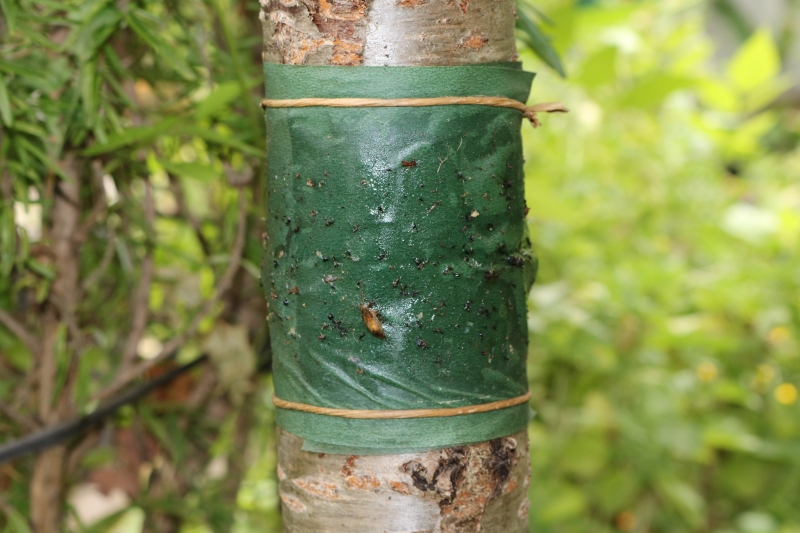
Tree Banding
Tree banding keeps fall and spring cankerworms from laying their eggs in the crown of the tree. Band your elms, Manitoba Maples and fruit trees each spring and fall to reduce the amount of cankerworms.
To band your trees:
- Purchase fibreglass insulation - 15 to 20 cm wide, plastic wrap or black garbage bags, duct tape and some type of sticky substance;
- Wrap a strip of fibreglass insulation around the trunk and one to two metres above the ground;
- Cover the insulation with plastic and secure with duct tape;
- Cover the plastic with your sticking agent;
- Regularly re-apply your sticking agent and remove debris to ensure effectiveness;
- Remove your band after mid-May and again in mid-November to keep your tree bark in good shape;
- Save the insulation for the next banding season.
More information on tree worms and other pests can be found on the Tree Diseases & Pests webpage.

